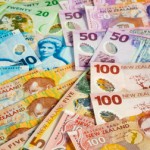Gold headed for the biggest weekly drop in two months but still was on track to post its best month since February 2014 after a supportive chain of recent events. Silver, platinum and palladium gained. Copper also rose but was set for a seventh weekly decline, the longest such run since 2008, amid concerns that lower demand from top consumer China will fail to soak rising supply.
Comex gold for delivery in April climbed 0.64% to $1 263.9 per troy ounce by 10:38 GMT, shifting in a daily range of $1 266.8-$1 257.5. The precious metal lost 2.43% yesterday to $1 255.9, having previously reached $1 252.1, its lowest since January 15th.
Gold fell on Wednesday and Thursday, sending the metal into negative weekly territory, after the the Federal Open Market Committee improved its assessment of the economy, describing the expansion as “solid” and substituting the “strong” depiction in its evaluation of job growth with “solid”.
Policy makers also downplayed fears of persistently low inflation, saying that despite a further decline in the near term is expected, inflation will likely gradually rise to the targeted 2% in the medium term as the effects of low oil prices diminish.
The Fed’s confidence indicated officials’ readiness to begin raising borrowing costs at some point in 2015, although the central bank repeated a pledge to stay “patient” on hiking interest rates and has previously said that they probably won’t reach “normal” levels until 2017.
The US dollar index for settlement in March was down 0.16% at 94.855 at 10:37 GMT, holding in a daily range of 95.011-94.725. The US currency gauge has risen for the past six weeks. A stronger greenback makes dollar-denominated commodities more expensive for holders of foreign currencies and curbs their appeal as an alternative investment, and vice versa.
Nevertheless, the metal headed for a third monthly gain, the longest rally since September 2012, after the European Central Bank launched a quantitative easing program last week in order to fight deflation, while the International Monetary Fund reduced its global growth forecast, prompting investors to seek the safety of gold.
Additionally, the yellow metal was boosted by instability in European markets, caused by worries that Greece may exit the 19-member zone under the leadership of the anti-austerity party Syriza.
The metal also benefited from increased physical demand in China, the world’s largest gold consumer, as the country prepares to celebrate the Lunar New Year holiday on February 19 and 20th. Demand is projected to stay strong at least until the end of the holidays when people exchange gold gifts for good luck.
“The overriding theme for the next 12 months for precious metals is that there’s going to be a lot more liquidity that’s being added to the system via the ECB and the U.S. economy is going to have to continue to outperform in order to attract investment dollars,” said Victor Thianpiriya, analyst at Australia and New Zealand Banking Group, cited by CNBC.
Assets in the SPDR Gold Trust, the biggest bullion-backed ETF, edged up 5.67 tons on Thursday to 758.37 tons and headed for their biggest monthly increase since 2011. Changes in holdings typically move gold prices in the same direction.
Copper
The industrial metal rose on Friday but was set to register its worst January since 1988 ahead of this weekends manufacturing data from China, the worlds top metals consumer.
Comex copper for delivery in March traded 1.26% higher at $2.4825 per pound at 10:38 GMT, having shifted in a daily range of $2.4930-$2.4295. The contract fell 1.13% on Thursday to $2.4515 and is down 0.7% for the week.
The metal has been driven lower by a combination of downbeat China data, oil prices tumbling to 6-year lows, as well as downward revisions of global economic growth by the World Bank and the International Monetary Fund.
David Lennox, a resource analyst at Fat Prophets in Sydney, said for Bloomberg: “In the near-term, there’s the ongoing concern that China might put out another set of slow data. We’ve got adequate supply, China slowing, so the price stays weak.”
Chinas National Bureau of Statistics is expected to report this weekend that activity in the manufacturing sector barely grew in January, with the corresponding Manufacturing PMI projected at 50.2, compared to 50.1 in December which was the lowest in 1-1/2 years.
Preliminary private data by HSBC showed last week that the country’s manufacturing sector contracted for a second consecutive month in January, while the statistics agency reported that the Chinese economy expanded by an annualized 7.3% in the fourth quarter, pushing full-year growth down to 7.4% in 2014, the lowest since 1990.
Earlier this week, the statistics bureau said that industrial profits in China grew last year by 3.3%, the slowest growth in records dating back to 2000. The gauge slid for a third month in December, dropping by 8%.
Meanwhile, inventories tracked by the LME rose to 247 450 tons on January 29th, the highest in 9-1/2 months.





